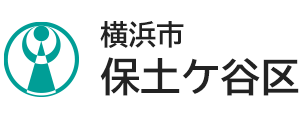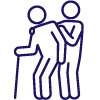現在位置
- Yokohama-shi Top Page
- Hodogaya Ward Top Page
- Health, medical care, welfare
- Health, medical care
- health promotion
- Healthy trivia
- Health Trivia "Dietary Life"
Last updated on September 30, 2020.
The text is from here.
Health Trivia "Dietary Life"
It's a healthy trivia about eating habits. "Trivia" is "miscellaneous matters, knowledge, trivia". The information posted here is supervised by Health and Welfare Center Hodogaya with reference to information from public institutions such as the Ministry of Health, Labour and Welfare.
Here is the health trivia about eating habits.
1 It is true that neutral fat is not only caused by oil! ?
2 It is true that one cup of ramen also has a salt content for one day! ?
3 Japanese people really have a 30% shortage of dietary fiber! ?
4 Hijiki really doesn't contain much iron! ?
5 It is true that children eating breakfast have better academic and physical results! ?
6 About 80% of people in their 20s and 40s are really short of vegetables! ?
7 Carbonated beverage 500ml contains a lot of sugar! ?
8 Food "zero calories" is not necessarily "0kcal"! ?
9 Biscuit is true that it has twice as much energy as buns!
1 It is true that neutral fat is not only caused by oil! ?
A picture of sweets
That's true.
The neutral fat figure was high in physical checkup, so many people may refrain from oily ones. However, in fact, the main causes of raising the numerical value of neutral fat are obesity and excessive intake of carbohydrates such as sugar from sweets and drinks.
・Are you eating too much sweets or fruits late at night?
・Are you drinking juice or sugar-filled coffee or tea for hydration?
Let's review our daily diet♪
2 It is true that one cup of ramen also has a salt content for one day! ?
A picture of ramen
That's true.
The target salt intake for Japanese is less than 7.5g for men and less than 6.5g for women. (Meal intake standard 2020 version) When you drink ramen to the soup, it contains about 7g of salt per cup, so you have consumed almost one day's salt. Ingesting too much salt every day increases blood pressure, so try to reduce salt on a daily basis. Even young people, too much salt can lead to higher blood pressure in the future, so let's learn a thin lifestyle without being alert!
3 Japanese people really have a 30% shortage of dietary fiber! ?
That's true.
The amount of dietary fiber required for Japanese people is 21g for men and 18g for women (meal intake standard 2020 version), but the average amount actually consumed is 14.4g (results of the 2018 National Health and Nutrition Survey), about 30% short!
Dietary fiber has many functions to prevent lifestyle-related diseases. Eat a lot of vegetables, mushrooms and seaweeds that contain a lot of dietary fiber, and be aware of building a healthy body!
4 Hijiki really doesn't contain much iron! ?
A picture of hijiki
That's true.
In the food ingredient table, the iron content of hijiki (dry) is 58.2 mg per 100g. → It has decreased to 6.2 mg to 1/9. As a factor of this, iron pots were used in the process of hijiki manufacturing in the past, but now stainless steel pots have been used to reduce iron content. Intake iron to prevent anemia, etc. should be taken from various ingredients such as soy products, komatsuna, lean meat and liver.♪
5 It is true that children eating breakfast have better academic and physical results! ?
A picture of a child eating a meal
That's true.
Studies have shown that children eating breakfast tend to have higher academic and physical strength. Eating breakfast has a habit of getting up early and getting up early, and there are many good things like preparing a body clock. If you don't eat breakfast, you'll run out of energy before noon, and you'll get irritated, unable to concentrate, or feel weak. If you haven't eaten breakfast, you can eat something because you can do a little, so if you're already eating breakfast, let's maintain and think about better content!
Reference 1: Ministry of Education, Culture, Sports, Science and Technology FY2018 National Achievement and Learning Status Survey Results Data [National Version / Elementary School] 4 Questionnaire Survey Results (3) Relationships, Cross tabulation table Cross tabulation table (elementary school student questionnaire-subject) Question No. 007 Do you eat breakfast every day?
Reference 2: 10 pages of leaflet of “Food Education Guide” of the Ministry of Agriculture, Forestry and Fisheries
Eating breakfast and improving the efficiency of study and work (Document: Ministry of Education, Culture, Sports, Science and Technology "National Achievement and Learning Status Survey" FY2018 (outside site)
6 About 80% of people in their 20s and 40s are really short of vegetables! ?
Women who have 350g of vegetables
That's true.
You need to consume more than 350g of vegetables to fill the daily vitamins and dietary fiber. However, about 70% of Japanese people, especially about 80% of people in their 20s and 40s, do not reach 350g, and there is a shortage of vegetables. Vegetables are an important source of vitamins and minerals, which are the nutrients needed to enable the body to use carbohydrates and proteins. Be aware of the daily target amount (350g) and actively eat 3 meals a day and vegetable dishes.♪
Reference: Hodogaya Ward homepage Let's eat vegetables Let's prevent lifestyle-related diseases!
7 Carbonated beverage 500ml contains a lot of sugar! ?
A picture of a juice
That's true.
Carbonated drinks contain a lot of sugar. What a large amount?…56g! It contains sugar equivalent to 14 stick sugars of 4g. Be careful not to take too much sugar!
8 Food "zero calories" is not necessarily "0kcal"! ?
A picture of a juice
That's true.
"Zero calories" displayed on food is not all "0kcal". What can be labeled "0kcal" is less than 5kcal per 100g of food (100ml for beverages). This means that even drinks of 4kcal per 100ml can be described as "zero calories". If you take 500ml of this drink, you will have taken 20kcal. Be careful not to take too much because it is written as "zero calories"!
9 Biscuit is true that it has twice as much energy as buns!
A picture of a biscuit
That's true.
The main sources of calories of sweets are carbohydrates and lipids. The difference in calories is the amount of lipids. The amount of lipid of biscuits (soft) is about 69 times that of steamed steam. Two biscuits (50g) are about 260kcal (13.8g lipids, 31g carbohydrates). One manju (50g) is about 130kcal (0.2g of lipid, 30g of carbohydrates). Let's be careful about the amount you eat!
Reference: Table of 7 Revised Foods
Please take a look at it.
Inquiries to this page
Hodogaya Ward Health and Welfare Division Health Promotion Section
Phone: 045‐334‐6344
Phone: 045‐334‐6344
Fax: 045‐333-6309
E-Mail address ho-kenkou@city.yokohama.lg.jp
Page ID: 419-113-874













